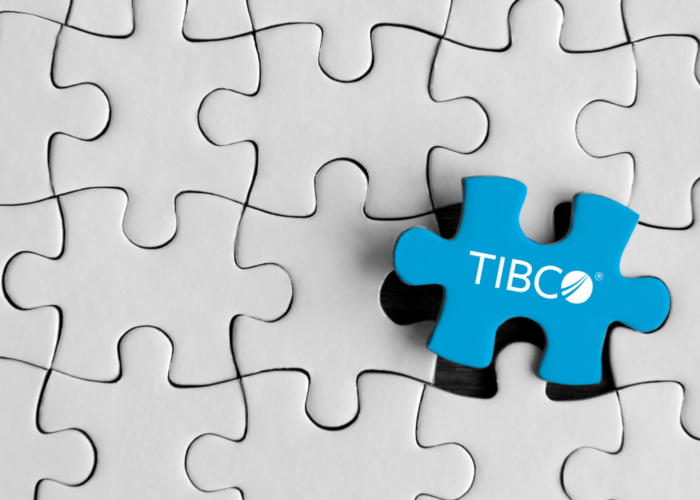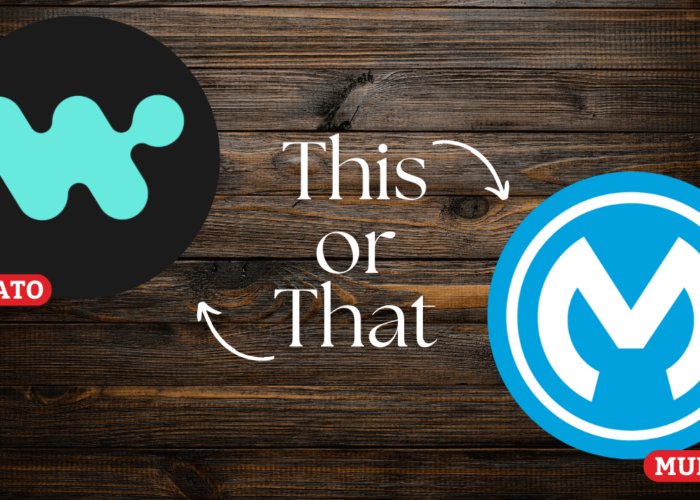Enterprise integration is critical to a company’s business outcomes. It is an extensive process that comprises a few key steps. Technology selection is one such initial step, and making a good decision this early in the process puts the entire integration project on the right track. Picking a suitable technology is a unique challenge for each company due to their varying needs. Thus, breaking down the technology selection stage into smaller considerations creates a general decision-making rubric for all companies; the right technology serves as a strong foundation for a company’s digital transformation goals.
In this article, we will explore the steps, methodologies, and points of analysis that form the best course of action for selecting enterprise technologies.
What is a technology strategy?
Every decision-making process starts with a broad plan that encompasses possible actions required to achieve some desired outcome. A technology strategy serves exactly this purpose for all things related to a company’s IT resources. Developed by the organisation’s business and IT personnel, it explains how technologies fit into the enterprise’s business strategy. It is usually done to ensure long-term stability within the organisation’s infrastructure; a technology strategy can be used to predict changes in future business needs and study the implications of implementing a certain digital solution in the present.
A technology strategy may inform many areas. A few of them are:
- Information technology acquisition
- The strengths and weaknesses of current IT systems within the organisation
- IT resource allocation
- Summary of resources (includes factors such as staffing and budgets)
- Management of resources
A technology strategy must be understood by non-technical stakeholders. Therefore, it should avoid using IT-related terminology. Moreover, a technology strategy can briefly touch on the enterprise architecture of a business by providing a high-level overview of its structure.
Standardised enterprise architecture frameworks (TOGAF and ASSIMPLER) can be used to identify areas of improvement within the current business strategy and areas of development for future business strategies. Using these frameworks and others, business and technology leaders can study the business-IT alignment of different facets of a company’s operations. In the case of strong business-IT alignment, the functionality of a company’s IT infrastructure efficiently supports its business objectives. Furthermore, these frameworks also assist the definition of a technology roadmap. This is a visual representation of the technology strategy, empowering individual teams within an organisation to work towards their goals. Especially for large enterprises, a technology roadmap can help keep track of highly complex IT solutions and initiatives (such as migrations and security).
What is technology selection?
Technology selection is one part of the larger technology strategy of the company. It is a methodology that involves analysing the business case and choosing a technology or technology stack that will solve it most effectively. A business case usually consists of non-quantifiable objectives such as:
- Better customer retention
- Workspace morale development
- Reduced prospects of litigation
Having a strong business case will make sure that companies do not just select technology for its own sake. If this happens, it leads to what is known as shelfware—a purchased software tool that is never put to use regardless of its inherent quality. To generate maximum value, enterprises must highlight their business priorities before picking a technology.
The fundamentals of the technology selection process are:
- Before investing in any new technology, a company must benchmark the basic capacity of their existing IT environment so that any modifications they make to it are necessary improvements. This will allow companies to inspect the intricacies of the new technologies they procure and reap their benefits whilst avoiding the perils of their old system.
- A company has numerous departments and teams, each with its own end goal. Before proceeding with software selection, some common ground needs to be established between the many working parts of an organisation. To achieve this, a company must embrace a robust hierarchy of internal leadership and executive support in tandem with a governance framework that represents all departments as evenly as possible.
3 Steps to select the right integration technology for your organisation
Any technology selection process follows some version of the following steps:
- Technical discovery or technology exploration
- Technology assessment or technology evaluation
- IT expenses, costs, and budgets
Let’s expand these steps further to understand them in detail, particularly within the domain of integration.
Step 1: Technical discovery or technology exploration
If a company requires an integration of their IT systems, the technical discovery step would be the pre-development phase of their integration project. Here, the company must set up a team of experts that gathers information pertaining to the company’s use case—the functional and non-functional requirements (problem context), the people involved, processes, policies, and much more. Then, the team uses this information to perform an initial analysis that paints a broad picture or vision of the integration project and its outcomes in accordance with the needs of the stakeholders and end users.
Don’t hesitate to get in touch with us; our integration specialists are here to help you out!
This exploratory step does not result in a final solution immediately. Rather, it is a way for the team to scope out the project’s landscape and collect knowledge on potential ways in which a solution can be reached.
During this stage, the team will try to answer questions such as:
- The available and emerging technologies on the market. This will help narrow down a marketplace category that matches the company’s business case, helping them find a new technology to update their old systems. A marketplace category is a rough assemblage of competing technologies that function in similar ways and solve similar problems. For instance, if a company requires a secure login system for their website, a good place to start would be the identity and access management (IAM) marketplace.
- The advantages and disadvantages of existing technologies within the enterprise.
- Technical constraints. For instance, IT infrastructure solutions require companies to think about whether they wish to host their systems on-premises or on the cloud. If the company prefers cloud solutions, there are more constraints to be considered, such as the types of cloud deployment models (public, private, or hybrid) or the choice of cloud service providers (AWS, Azure, and so on).
- Any training the integration specialists must undertake if the company chooses to procure a new technology. This is so that they have enough knowledge about the technology to implement it seamlessly.
- The interoperability of the tool. This aspect focuses on the new technology’s ability to communicate information smoothly with other existing tools within the enterprise. This ensures that the new technology harmonises with the systems that are already in place.
- Partner Ecosystems and Support. Technologies and products that have a strong network of third-party business partners and advocates—think vendor management consultancies—that vouch for it may also have a strong community of experts and users that can offer their support in case of any questions or issues.
Step 2: Technology assessment or technology evaluation
In this step, the team might do a number of different tasks that lead up to finally choosing the right technology:
- After the research of the technical discovery step, the team frames a ‘long list’ of potential technology vendors or suppliers. These could be the software vendors themselves or other service-providing organisations such as integration consultancies or agencies. Some factors that shape the long list are geographical location, costs, and alignment of technical expertise.
- The team will further shrink this list into a shortlist. This can be done by studying a software’s ideal scenario (the business situation in which a software proves to be most useful) and checking if this agrees with the company’s current use case.
- This shortlist contains all the possible technology suppliers the company wishes to evaluate. There are three ways in which a company can solicit the attention of vendors. A Request for Information (RFI) solicits information about the technology from the vendor. A Request for Proposal (RFP) is sent out by the buying company to prospective vendors to invite business proposals from their end. An RFP aims to expand the pool of potential suppliers for the purchasing company. It also attempts to handle the technology selection process through a data-driven, strategic approach. Finally, a Request for Quote (RFQ) is sent out to solicit information regarding expenditure from the supplier. Sometimes, companies send out a combination of some or all of the three solicitations.
- Although the RFP contains information about the context of the project, a Q&A cycle will help bridge the gap between what the company requires and what the bidding vendors are delivering.
- The proposals from the bidding vendors are critically assessed. Bidders may also run demos and proof of concepts (PoCs) that allow companies to witness the technology in action. During the proof of concept stage, vendors attempt to replicate a final implementation and make room for hands-on testing by members of the company wherever possible.
Want to get started with this step right now? Visit our landing page to make a preliminary technology assessment!
Step 3: IT expenses, costs, and budgets
While evaluating IT expenses is not a step of its own—both the technical discovery and technology assessment phases make observations about expenses and budgets—it is a highly important segment of the technology selection process. Negotiating pricing starts from the initial stages of the project. This is to announce to potential vendors that pricing is an influential factor in the company’s decision-making process. IT costs can include a range of short-term or immediate costs as well as the total cost of ownership (TCO), which includes long-term expenditures related to licensing, maintenance, and upgrades.
Once the team has decided on a vendor after reflecting on the PoCs of their bidders, they may conduct some closing negotiations for pricing. However, this holds less weight than the continuous but subtle negotiations that happen throughout the selection procedure.
It is worth noting that the ultimate choice of technology must not solely rely on monetary costs. Rather than opting for the lowest cost option, it is better for the company to select a technology that promotes high business value and reasonably fits their budget.
Conclusion
This article offers a holistic view of the technology selection process through the combined lens of the business and digital aspects of an enterprise. Before settling on their final choice of integration technology, companies can follow the above-mentioned steps to screen likely contenders.
Curious to find out what stage of the integration journey your company’s currently at? Would you like to progress quickly and efficiently towards your integration destination? Take our short survey to understand your own strengths and weaknesses.


Talk to our experts!
Contact our team and discover the cutting-edge technologies that will empower your business.
contact us





